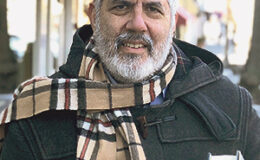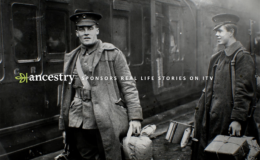
Christy Mirack was murdered in 1992, but the case wasn’t solved until last year. The 25-year-old sixth-grade teacher was found dead in her home near Lancaster, Pa., naked from the waist down. She had been beaten, strangled and sexually assaulted. Police collected a semen sample, ran it through a DNA database, and found no matches. The crime went into a cold-case file.
In June police arrested a 49-year-old suspect, Raymond Rowe, a local disc jockey known as “DJ Freez.” They found him with the help of Parabon NanoLabs, a Reston, Va.-based forensic DNA company. “There was well over 1,000 people investigated for Christy’s murder, and Raymond Rowe was never on that list,” CeCe Moore, who heads Parabon’s genetic-genealogy lab, tells me. Ms. Moore, 50, has used a combination of modern genetic technology and old-fashioned family trees to help law enforcement track down criminals long on the lam.
An estimated 18 million people have taken at-home DNA tests from companies like AncestryDNA and 23andMe. The tests can help you discover distant relatives or learn about your ethnic composition. Sen. Elizabeth Warren famously took one in October to test her claim that she had Cherokee blood. It turned up evidence of a Native American ancestor six to 10 generations back, but didn’t have the desired political effect. This month it was reported that she had apologized privately to a leader of the Cherokee Nation.
Ms. Moore doesn’t have much to say about Ms. Warren, but notes that most people who take tests to corroborate family stories of Native American ancestry “show no genetic evidence of that oral history”—though it’s possible a Native American ancestor “did indeed exist but is too far back in time to be detected.”

Illustration: TERRY SHOFFNER
Sometimes DNA tests resolve more-fundamental questions about identity. Ms. Moore has used them to help adults who were adopted find their biological parents and a man with amnesia to figure out who he was, among other things. Her current focus is criminal justice.
For decades, detectives used DNA from Y chromosomes and mitochondria to identify potential perpetrators, but both methods had limitations. Only men have Y chromosomes, which are passed down unchanged from father to son. “It can’t tell you how closely two people are related,” Ms. Moore says. “It can just tell you that they share a common ancestor on that one line.” On the other hand, DNA from mitochondria—a cell’s energy engine—is passed from mother to child and thus only reveals genetic information from the maternal line. Law enforcement also tested 20 or so genetic markers from autosomes—nonsex chromosomes, which are inherited from both parents. But these markers provided limited information.
A key breakthrough came a decade or so ago when consumer genetic-testing companies developed the capability to analyze more than 500,000 autosomal genetic markers. The mother’s and father’s autosomal DNA combines more or less randomly at conception, so that full siblings on average share about half their DNA and half-siblings share one-quarter. Each generation halves the proportion of shared ancestors and entails another mixing, so that common DNA declines by a factor of four: First cousins share an average of one-eighth (12.5%) of autosomal DNA, second cousins 1/32nd (3.125%), and third cousins 1/128th (approximately 0.781%).
These advances made it possible to identify and even connect with distant relatives. “You could get your DNA tested, and it would be compared to all these other people on the autosomal DNA, and you would get a list of people that you share DNA with,” Ms. Moore says. That technique could also be used to identify mystery DNA found at a crime scene.
Ms. Moore has been called an armchair detective, though a more apt description is a self-taught sleuth. She enjoyed learning about genetics in high school but studied music and arts in college because biology made her squeamish: “Cutting open frogs always grossed me out.” As she pursued a career in musical theater and TV production, she remained interested in genealogy (the study of family histories) and genetics (the analysis of DNA).
A decade ago Ms. Moore decided to test 40 of her family members. “Second cousins are predicted to share, on average, 3.125% of their DNA,” she says. “I wanted to see, with real data, if it was going to match the computer simulations.” The average held up, although the distribution was broad: Ms. Moore’s second cousins shared anywhere between 1% and 6% of her DNA.
After she published the results of her family DNA study on a blog, readers conducted ancestry tests of their own, which generated a crowdsourced experiment. Ms. Moore realized that different family relationships could yield similar genetic math, so that while DNA tests can suggest possible relationships between two individuals, they become less conclusive the more distant the relationship. In terms of shared DNA, she notes, “a second cousin is genetically equivalent to a half-first cousin once removed, and to a first cousin twice removed.”
If a test shows that someone shares 50% of your DNA, you can be sure he’s your sibling. But sometimes people who think they’re related find out otherwise through a test, and that is one type of mystery Ms. Moore is called on to solve. In 2012 a couple inadvertently learned through a DNA test that their 19-year-old daughter, Annie, was biologically unrelated to the husband. Ms. Moore helped the family determine Annie’s true father—a technician at the University of Utah fertility clinic that helped the couple conceive, who was also a sperm donor. It turned out he was a convicted kidnapper, now dead, and their sperm was switched at the clinic. Whether the swap was intentional remains a mystery.
When I ask Ms. Moore how she identified Annie’s father, she says she can’t disclose the specific details but describes her general method: First, she uses an ancestry test to identify a distant relative—say, a third cousin. She then constructs a family tree, filling out branches with information from public records such as wedding announcements, obituaries and even social media.
“You just keep building and building and building to find that intersection where these different families come together,” she says. “Most second great-grandparents—back then there were big farm and Catholic families. I run into it often where there’s between 15 and 20 children, and it takes a lot of time to build all of those people’s descendants forward.”
It took Benjaman Kyle nearly two years to find himself with Ms. Moore’s help. He had suffered amnesia after being beaten unconscious at a Georgia Burger King in 2004. Before the autosomal DNA breakthrough, efforts to match his Y chromosome with public databases led to dead ends. But using the results of a consumer ancestry test, Ms. Moore was able to find half a dozen of his relatives, whom she linked to family surnames and geographic locations to determine his identity.
Genealogy entails a lot of shoe-leather sleuthing, so it isn’t surprising that Ms. Moore has been called upon to apply her skills to criminal justice. A major breakthrough for the genealogy field came last spring when law enforcement used autosomal DNA to identify the “Golden State Killer,” who had committed more than a dozen murders and 50 rapes in California during the 1970s and ’80s. The suspect, now in his 70s, was arrested and charged with 13 murders, the statute of limitations for rape having expired. The trial has yet to be scheduled.
Police identified him by matching preserved crime-scene DNA to samples in GEDMatch, a nonprofit research database where users can upload genetic data from ancestry tests like 23andMe, AncestryDNA, Family Tree DNA and MyHeritage. GEDMatch allows people to search for relatives who take tests from different companies, though they must also consent to allow law enforcement to use their DNA.
By finding distant relatives that matched the perpetrator’s DNA, law enforcement was able to reverse-engineer his family tree. Ms. Moore wasn’t involved in the case, but it drew interest from other law-enforcement agencies and Parabon, which hired Ms. Moore to lead its new genealogical forensic unit.
Crime-scene DNA and a family tree aren’t enough to arrest or convict someone or even obtain a search warrant. “They can’t arrest on my word,” Ms. Moore emphasizes. Police therefore must collect fresh DNA from the suspect to confirm the genetic match. In one case Ms. Moore worked on, officers picked up a cup that had fallen out of the suspect’s truck. In the Christy Mirack case, Pennsylvania State Police went undercover at a school event where Mr. Rowe was performing and collected a piece of chewing gum he’d left behind. Last month, Mr. Rowe pleaded guilty to first-degree murder, rape and burglary and was sentenced to life in prison.
Parabon has been fielding dozens of requests from law-enforcement agencies across the country to crack cold cases, and breakthroughs are coming more rapidly as more people upload their data to GEDMatch. In January police in La Mesa, Calif., arrested a 39-year-old man suspected of a machete killing in 2006. A week earlier Parabon identified a suspect who allegedly assaulted two women in Mississippi in 1990.
Ms. Moore is optimistic that within a few years most cold cases will be solvable with public data. GEDMatch contains data from more than 1.2 million individuals and is adding 1,000 to 2,000 genetic profiles each day. A geneticist at MyHeritage figures that profiles from three million Americans of European descent could identify 90% of people within this demographic.
But GEDMatch’s expansion has raised privacy concerns, which were inflamed by Family Tree DNA’s decision last fall to provide the FBI with more than a million genetic profiles. By taking an ancestry test, you could unknowingly be incriminating a relative.
Ms. Moore is fiercely protective of individual privacy and doesn’t want DNA used without people’s consent. Yet making your own DNA public may impinge on your relatives’ privacy. Ms. Moore worries that such fears could deter people from taking ancestry tests and make it harder to put criminals behind bars.
As for the complaint that genealogy can draw innocent relatives of criminals into investigations, she notes that it can also exonerate innocent people who might needlessly be pulled into investigations. “There are hundreds or thousands of people that are investigated in crimes that are innocent,” she notes. “In all of the crimes I’ve worked except one, the [identified perpetrator] didn’t appear on their person-of-interest list.”
Forensic genealogy isn’t only about carrying out justice, she says, but also preventing future crimes. “It always feels like a bit of a race against time.”
Ms. Finley is a member of the Journal’s editorial board.














